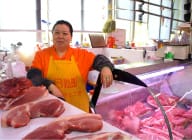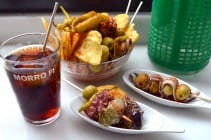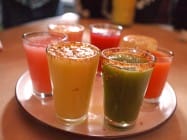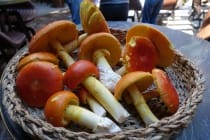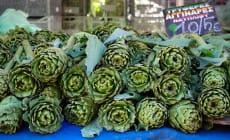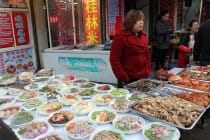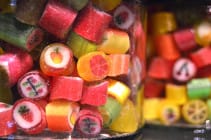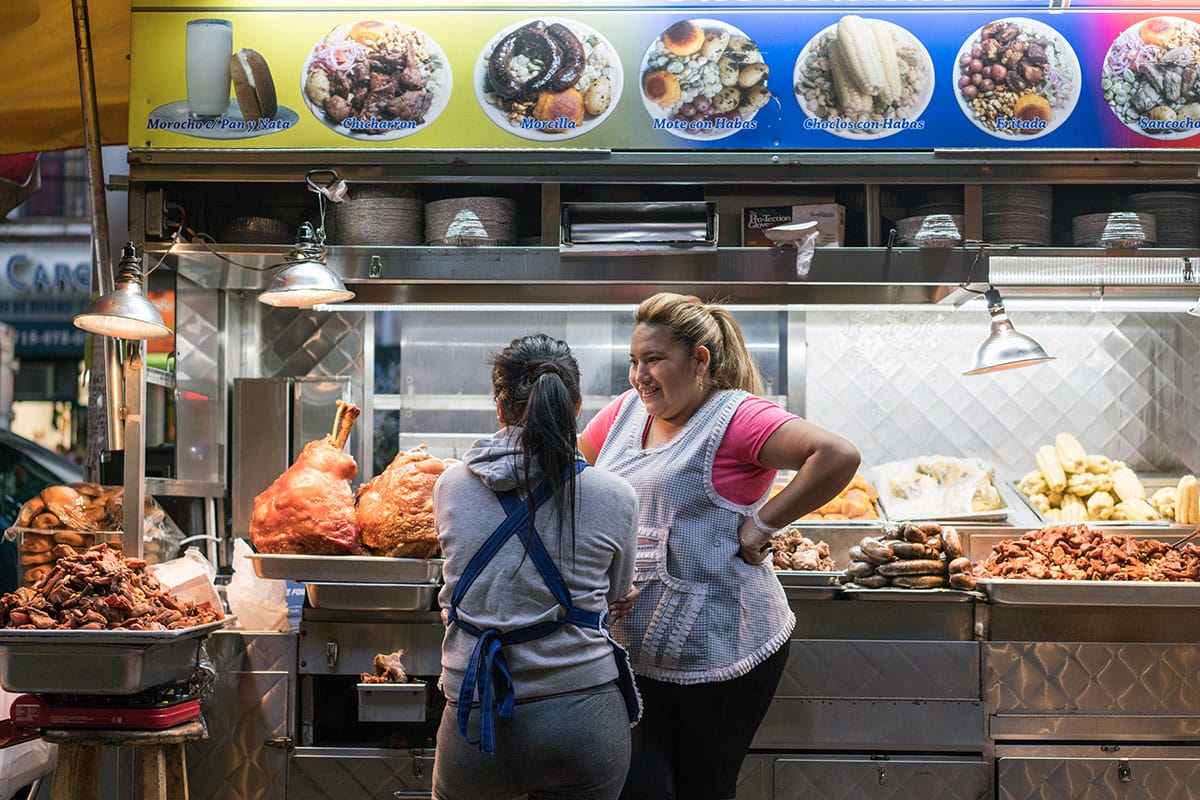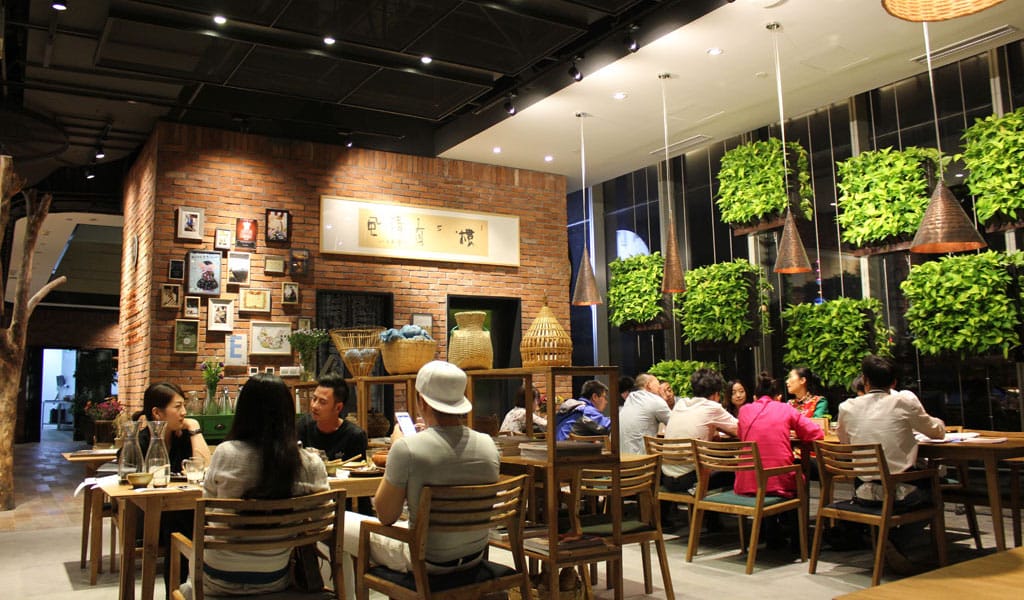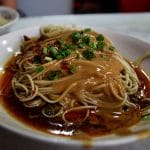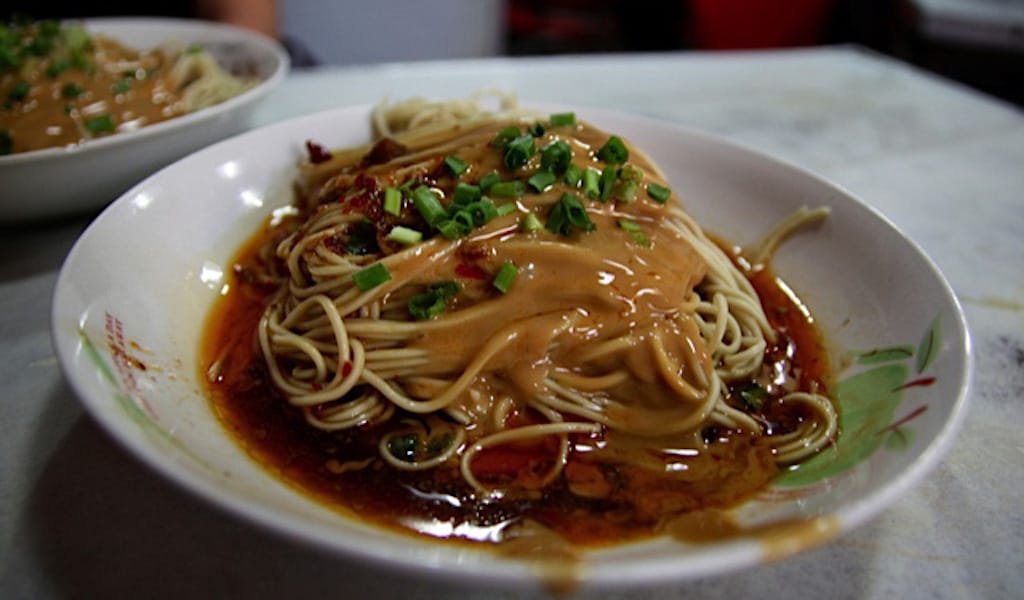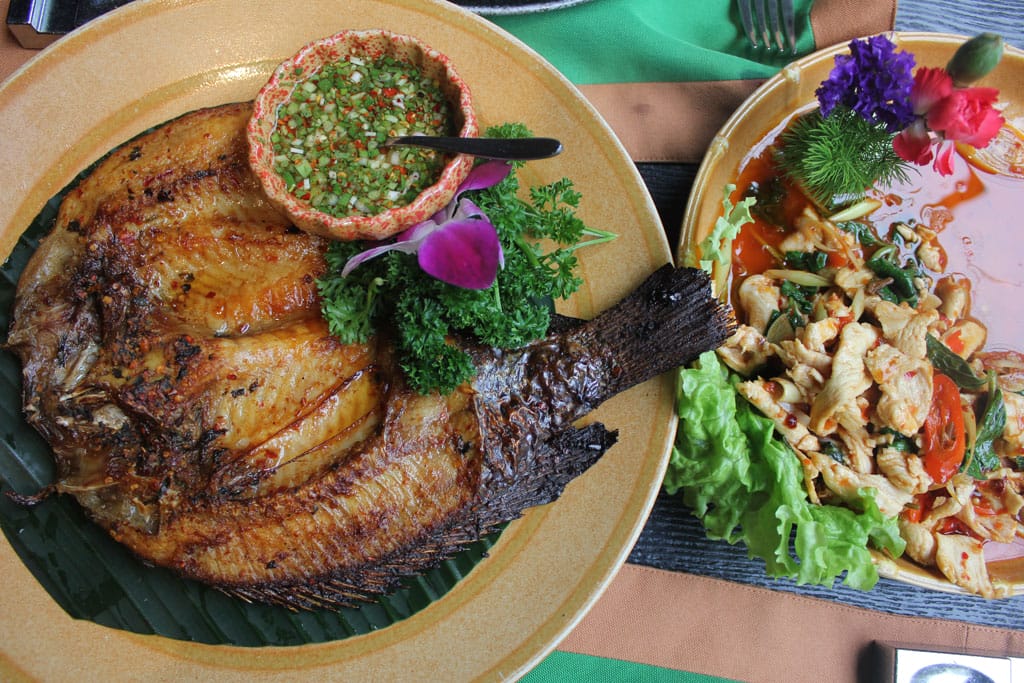In & Out arrived in Beijing years ago to rave reviews, but the Yunnan restaurant only just settled in Shanghai, confusing homesick Californians with its name. Instead of Double-Double burgers and Animal-Style fries, it serves cross-the-bridge noodles (过桥米线, guòqiáo mǐxiàn) and fried potato balls (土豆球, tǔdòu qiú).
While most Yunnan restaurants in China span the whole province’s cuisine, from tea leaf salads to crispy adzuki beans, In & Out’s menu is (mostly) specific to Lijiang, a city deemed a UNESCO heritage site that lies about halfway between Shangri-La and Kunming, the provincial capital, and is home to the Naxi and several other ethnic minorities. Lijiang cooks takes advantage of their location in the foothills of the Himalayas, foraging mountainous wild mushrooms and utilizing goat’s milk in cheese-making.
In & Out is a modern Chinese take on the ubiquitous mall restaurant: floor-to-ceiling windows, burnished cement floors and Naxi embroidery hanging from the gray brick walls. The waitstaff wear the traditional clothing of Yunnan’s local minorities, and plants sprout wildly from the walls and floors. The menu is beautifully shot, laid out like a coffee table book with stories and histories accompanying many of the dishes (in Chinese).
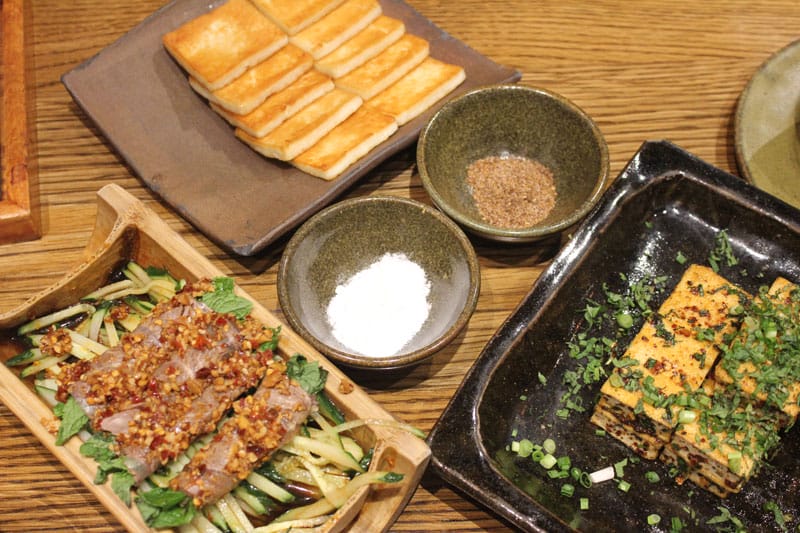
When it comes to Yunnan food in Shanghai, you’d be hard-pressed to beat Lotus Eatery, but In & Out puts in a strong showing, and while it’s not destination dining, it is miles better than almost any other Chinese restaurant in the vicinity of Xintiandi’s touristy laneways. The typical Yunnan favorites, like fried goat’s cheese (乳饼, rǔ bǐng), are on the menu, but this is your chance to go a little more local, so try some off-the-eaten-path dishes like pan-fried tofu topped with chilies and green onions (石屏香煎包浆豆腐, shí píng xiāngjiān bāo jiāng dòufu) or eggs scrambled with edible jasmine flowers (茉莉花炒蛋, mòlìhuā chǎo dàn).
Wash it all down with glasses of rice wine (米酒, mǐjiǔ). You can try white (白米酒, bái mǐjiǔ), funky in its fermentation, or purple (紫米酒, zǐ mǐjiǔ), almost cola-like in its syrupy flavor.
Save room for dessert. The offerings may not be traditional and they’re definitely not from Lijiang, but there’s plenty of mango and sticky rice puddings reminiscent of the Xishuangbanna region and its neighboring Thailand. We can’t resist a spoonful of the pineapple and mint “snow” (菠萝薄荷雪, bōluó bòhé xuě) topped with coconut cream – it’s like a Chinese piña colada.
Editor’s note: This review was first published in June 2016.
Published on July 24, 2018
Related stories
June 9, 2021
ShanghaiThe relative abundance of heritage architecture and mixed zoning in the former French Concession neighborhood (technically the Xuhui district) has left a legacy of nooks and crannies where a number of mom-and-pop noodle shops are able to withstand the test of time and pressures of a fast-changing economy. Luckily, enough noodle lovers are still craving…
June 8, 2019
ShanghaiMall dining in Asia is nothing like its American counterpart, thanks mostly to the humid climates of Singapore and Hong Kong. These two islands have tunnels and bridges connecting malls throughout the cities, making them easy to traverse while staying inside the air-conditioned environment. When temperatures spike – as they do on most days –…
February 16, 2017
ShanghaiWhen “A Bite of China” came out in 2012, it took China – and the rest of the foodie world – by storm. The beautifully shot documentary showed Chinese culinary artisans around the country, watching them pull whole lotus roots from the mud in Zhejiang and make steamed buns from millet in Shanxi. Yunnan cuisine…
















